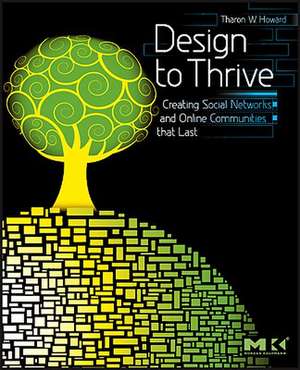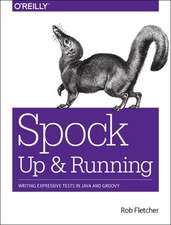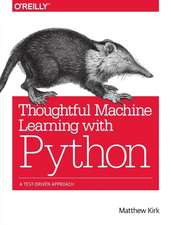Design to Thrive: Creating Social Networks and Online Communities that Last
Autor Tharon Howarden Limba Engleză Paperback – 21 feb 2010
- Provides essential tools to create thriving social networks, helping designers to avoid common pitfalls, avoid costly mistakes, and to ensure that communities meet client needs
- Contains real world stories from popular, well known communities to illustrate how the concepts work
- Features a companion online network that employs the techniques outlined in the boo
Preț: 213.15 lei
Preț vechi: 295.91 lei
-28% Nou
Puncte Express: 320
Preț estimativ în valută:
40.78€ • 42.59$ • 33.68£
40.78€ • 42.59$ • 33.68£
Carte tipărită la comandă
Livrare economică 08-22 aprilie
Preluare comenzi: 021 569.72.76
Specificații
ISBN-13: 9780123749215
ISBN-10: 0123749212
Pagini: 248
Dimensiuni: 191 x 235 x 34 mm
Greutate: 0.59 kg
Editura: ELSEVIER SCIENCE
ISBN-10: 0123749212
Pagini: 248
Dimensiuni: 191 x 235 x 34 mm
Greutate: 0.59 kg
Editura: ELSEVIER SCIENCE
Public țintă
web designers, information designers, information architects, content managers, usability engineers, web application designers, user interface designers, HCI academicsCuprins
1. IntroductionI. Why are virtual communities and social networks so popular?II. History of virtual communities (spans 30 years -- what is fad and what is not)III. Business justification for implementing virtual communitiesIV. Differences between “adhocracy, a “forum, a “group, a “virtual team, a “social network, and a “virtual community? People are often sloppy with their use of these terms, which creates problems for designers. 2. What are the factors needed for sustainable online communities?I. What is a “heuristic and why do we need one?II. RIBS theory/process3. RemunerationI. What is “remuneration?II. Case studies / popular examples?III. What are some best practice strategies for ensuring remuneration is functioning?4. InfluenceI. What is “influence?II. Case studies / popular examples?III. Best practice strategies for ensuring influence is functioning?5. BelongingI. What is “belonging?II. Case studies / popular examples?III. Best practice strategies for ensuring remuneration is functioning?6. SignificanceI. What is “significance?II. Case studies / popular examples?III. Best practice strategies for ensuring significance is functioning?7. ConclusionI. Summative discussion — lessons learned and how to apply them to designers’ workII. How RIBS can be used to think about designing for emerging media and delivery systems—particularly those involving mobile computing and videoIII. RIBS’ potential for the future of virtual community and social interface design
Recenzii
"This book provides the necessary antidote to the thoughtless, random and in too many cases desperate nature of many of today’s attempts to build online communities." --Carl Zetie, Strategist, IBM"Howard's theoretical stance is firmly grounded in a lifetime of practical experience which makes fascinating and sometimes very amusing reading. Have you ever wondered why some networks and communities thrive and others fail? Read this book and find out." --Dr. Jurek Kirakowski, Senior Lecturer, Human Factors Research Group, Cork, Ireland"Professionals in technical communication will find this book packed with relevant information, especially given the evolving role of communicators in new media. Writers and editors can put best practices to use in working with their employers, with clients, or within their own professional lives." --Angel Belford, Technical Communication, Volume 58, Number 1, February 2011"This important work fills a gap in the literature in its proposal of methods to fuse technology with practical community growth and sustainability… [Howard] more than knows the subject, considering the very prominent place he holds in the human computer interaction and usability communities… [Howard] very smoothly conveys his thoughts in an eloquent, easily accessible manner that any level of reader would be able to penetrate…. This surprisingly deep yet easily readable book seamlessly incorporates the research of people such as Bruce Tuckman, Leon Festinger, and Charlene Li and Josh Bernoff, among others… Highly recommended. All levels of academic and professional readers, especially those who create and maintain online communities." --CHOICE















